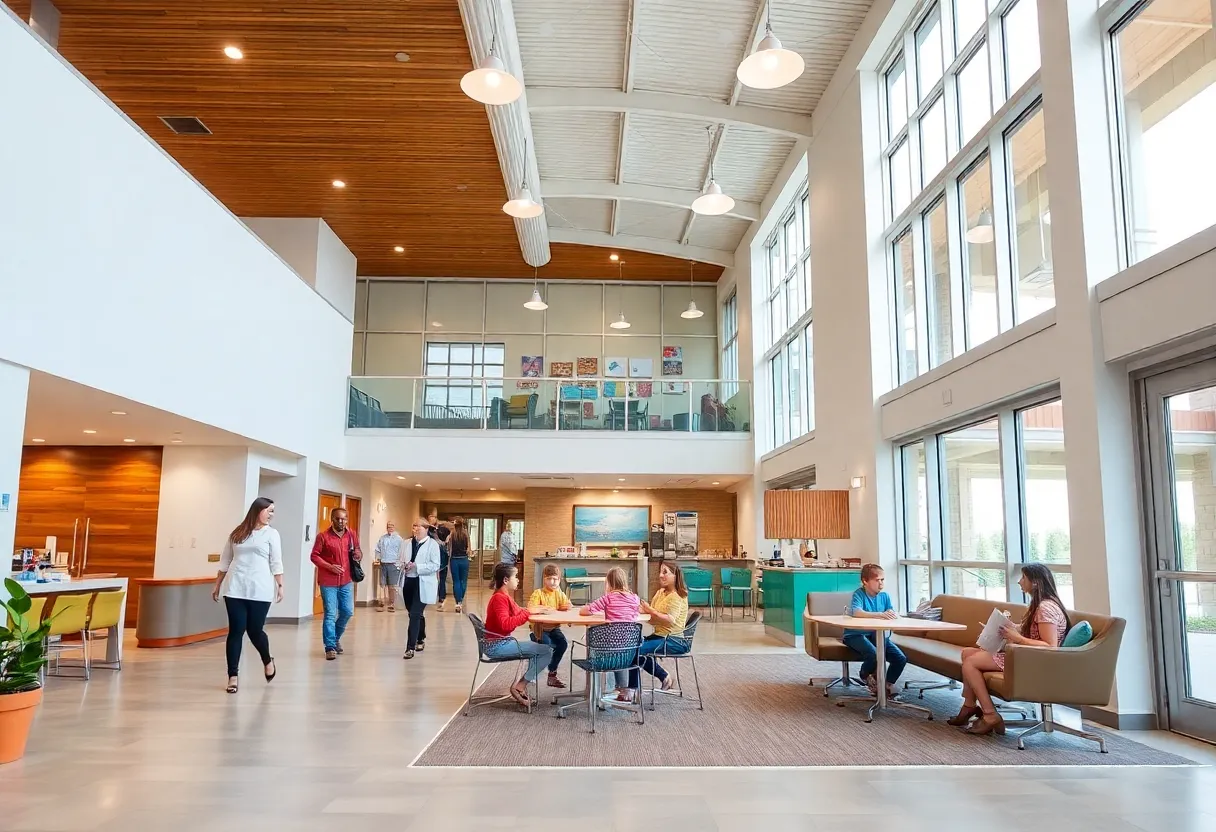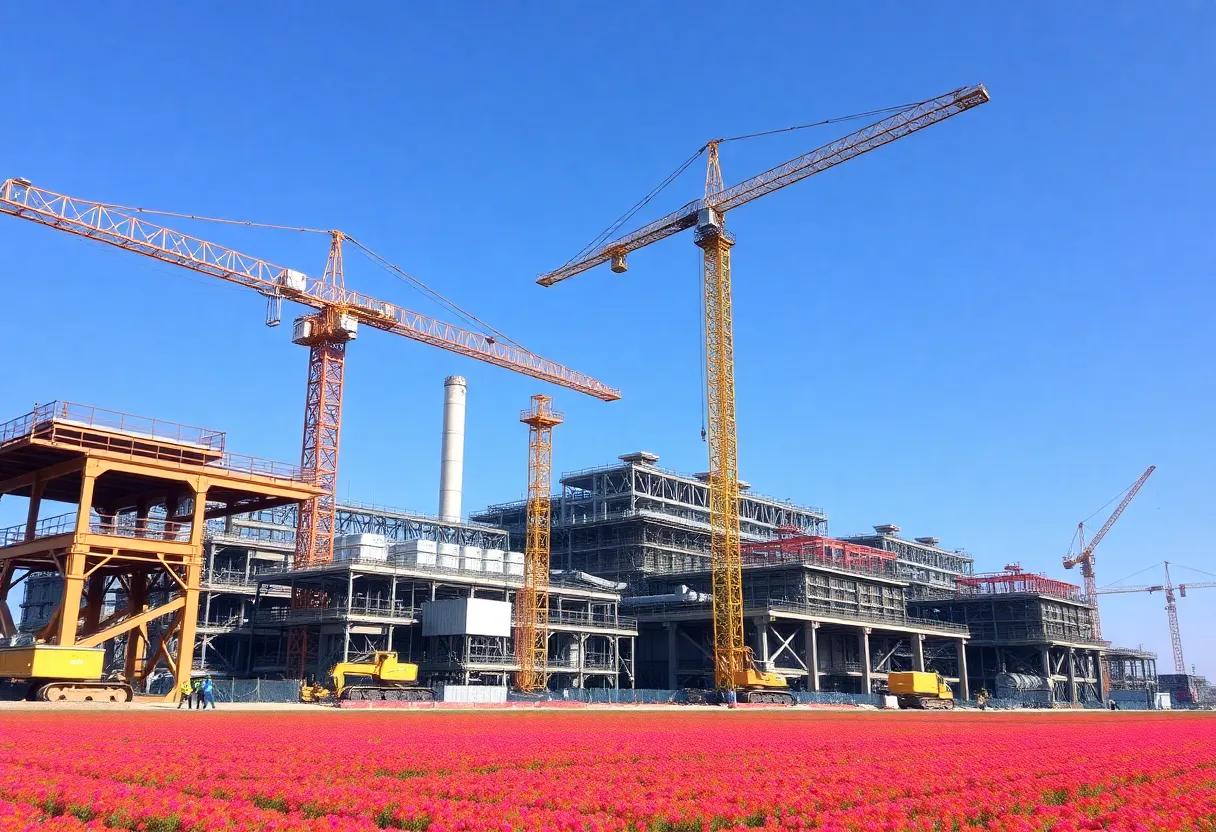News Summary
Georgetown, Texas, is undergoing a demographic shift with a growing younger population, leading to significant changes in its healthcare landscape. Local healthcare facilities, including St. David’s North Austin Medical Center and St. David’s Georgetown Hospital, are expanding their services and infrastructure to meet the evolving health needs of this demographic. Initiatives include the expansion of emergency services and surgical capabilities, all aimed at ensuring timely access to high-quality healthcare for the community’s younger residents.
Georgetown, Texas, is experiencing a demographic shift as its population becomes increasingly younger, prompting significant changes in the healthcare landscape of the city. The local healthcare facilities are taking proactive steps to address the evolving health needs of a younger community, with major expansions underway to enhance medical services.
Increasing Healthcare Capacity
St. David’s North Austin Medical Center is in the process of expanding its emergency department, a move that aims to accommodate the rising demand for urgent care services as the population grows. This expansion is part of a broader initiative to improve healthcare access and efficiency in the face of changing demographics. The first phase of this project is projected to be completed by late 2025, signaling a commitment to meeting the medical needs of younger residents.
Additionally, St. David’s Georgetown Hospital is planning to enhance its surgical capabilities by adding a fifth operating room later this year. This expansion is designed to increase the hospital’s ability to perform a variety of surgeries and procedures to better serve the community. By augmenting its facilities, the hospital aims to ensure that residents have access to timely care and advanced medical treatments.
Understanding the Demographic Shift
The trend of a younger population in Georgetown is reflected in various economic and social changes within the city. As younger individuals and families move to the area, their healthcare needs differ from those of an older demographic. Younger people tend to prioritize preventive health measures, wellness programs, and services that address lifestyle-related health issues. Healthcare providers in Georgetown are adapting to these needs by expanding their services and facilities.
This demographic shift is not just a local phenomenon but part of broader trends seen across many suburban areas in the United States. As younger generations seek affordable housing and quality educational opportunities, many cities are experiencing growth in their younger population segments. Healthcare systems nationwide are responding by tailoring their services to cater to this demographic.
The Role of St. David’s HealthCare
St. David’s HealthCare, which owns both St. David’s Georgetown Hospital and St. David’s North Austin Medical Center, plays a pivotal role in shaping Georgetown’s healthcare landscape. Under the leadership of CEO Scott Alarcón, the organization is focused on expanding and enhancing healthcare services in response to the changing needs of the community. Alarcón previously served as an administrator at Georgetown Hospital and played an integral part in its sale to St. David’s HealthCare, as well as the creation of the Georgetown Health Foundation.
The establishment of the Georgetown Health Foundation aims to further support health initiatives within the community, emphasizing the importance of preventive care and health education. By focusing on these areas, Georgetown is looking to create a healthier population that can thrive in its evolving environment.
Looking Ahead
As Georgetown continues to grow, the ongoing expansions and enhancements in its healthcare facilities signal a proactive approach to healthcare management. With the completion of new facilities and the introduction of additional services, the city is well-positioned to meet the needs of its younger population.
These developments not only reflect a commitment to providing high-quality healthcare but also underscore the significance of adapting to the changing demographic landscape. As healthcare needs evolve, so too do the strategies and resources employed to ensure that all residents of Georgetown have access to the care they require.
Deeper Dive: News & Info About This Topic
HERE Resources
Williamson County Faces Rising Death Cases and Legal Challenges
Georgetown Public Library Receives $120,000 Grant for Health Initiative
Trump Administration to End Temporary Protected Status for Haitians
Global Childhood Obesity Rates Surge
Texas Leads the Nation in Job Creation
St. David’s Georgetown Hospital Expands Healthcare Services
Iran and Israel Reach Ceasefire Amid Domestic Healthcare Talks
Georgia Southwestern University Honors Student Achievements
Austin Activates Tree Removal Teams Following Severe Storm Damage
Renewed Strikes in the Ongoing Israeli-Iranian Conflict
Additional Resources
- Community Impact: Georgetown Area Hospitals Updates
- Wikipedia: Georgetown, Texas
- Community Impact: Georgetown EMS Services Expansion
- Google Search: St. David’s HealthCare Expansion
- Community Impact: St. David’s HealthCare Expansion
- Google Scholar: Healthcare Demographic Shift
- Washington Post: DC Black Health Care Outcomes
- Encyclopedia Britannica: Health Care in the United States
- Community Impact: Georgetown Health Foundation
- Google News: Healthcare Industry Trends
Author: STAFF HERE GEORGETOWN
The GEORGETOWN STAFF WRITER represents the experienced team at HEREgeorgetown.com, your go-to source for actionable local news and information in Georgetown, Williamson County, and beyond. Specializing in "news you can use," we cover essential topics like product reviews for personal and business needs, local business directories, politics, real estate trends, neighborhood insights, and state news affecting the area—with deep expertise drawn from years of dedicated reporting and strong community input, including local press releases and business updates. We deliver top reporting on high-value events such as the Red Poppy Festival, Georgetown Swirl, and Christmas Stroll. Our coverage extends to key organizations like the Georgetown Chamber of Commerce and the Downtown Georgetown Association, plus leading businesses in manufacturing and tourism that power the local economy such as local wineries and historic downtown shops. As part of the broader HERE network, including HEREaustin.com, HEREcollegestation.com, HEREdallas.com, HEREhouston.com, HEREgeorgetown.com, and HEREsanantonio.com, we provide comprehensive, credible insights into Texas's dynamic landscape.






